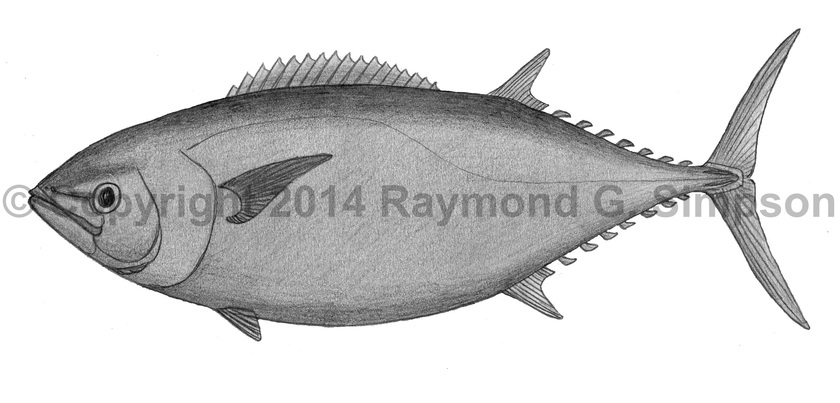
Common Name
Butterfly Kingfish
Year Described
Richardson, 1845
Identification
Dorsal Fin: XVII-XVIII, 10-11, followed by 6-7 finlets
Anal Fin: 11-13, followed by 6-7 finlets
Pectoral Fin: 19-22
Gill Rakers: 25 (first arch)
Vertebrae: 44
Body fusiform, robust, and compressed in cross-section. Snout long; more than three times eye diameter. Eye low on head. Mouth very large. Adipose eyelid absent. Jaw extends to middle of orbit. Teeth small and conical. Two interpelvic processes; much shorter than pelvic fins. Dorsal fins separated by a small gap. Spiny dorsal fin long and low in adults, high and arched in juveniles. Second dorsal and anal fin small with high anterior lobes. Pectoral fins fairly short. Pelvic fin huge and expanded in juveniles but smaller proportionally with age. Pelvic fins depressable into grooves in the belly. Caudal fin semilunate. Corselet absent; body covered in very large cycloid scales. Two small caudal keels (no median keel). Swimbladder present.
Color
Adults metallic steel blue, becoming darker dorsally and white on the belly. No markings. Fins body colored. Junveniles like adults but enlarged pelvic fin is very dark.
Size
Maximum size to over 170cm FL. Specimens larger than 70cm FL with proportionally smaller pelvic fins.
Habitat
Oceanic in deep waters.
Range
Southwestern Atlantic: Uruguay to Argentina.
References
Collette, B.B. and Nauen, C.E. 1983. Scombrids of the world. An annotated and illustrated catalogue of tunas, mackerels, bonitos and related species known to date. FAO species catalogue Vol. 2. , Source: FAO Fish. Synop. Vol. 125. 137pp.